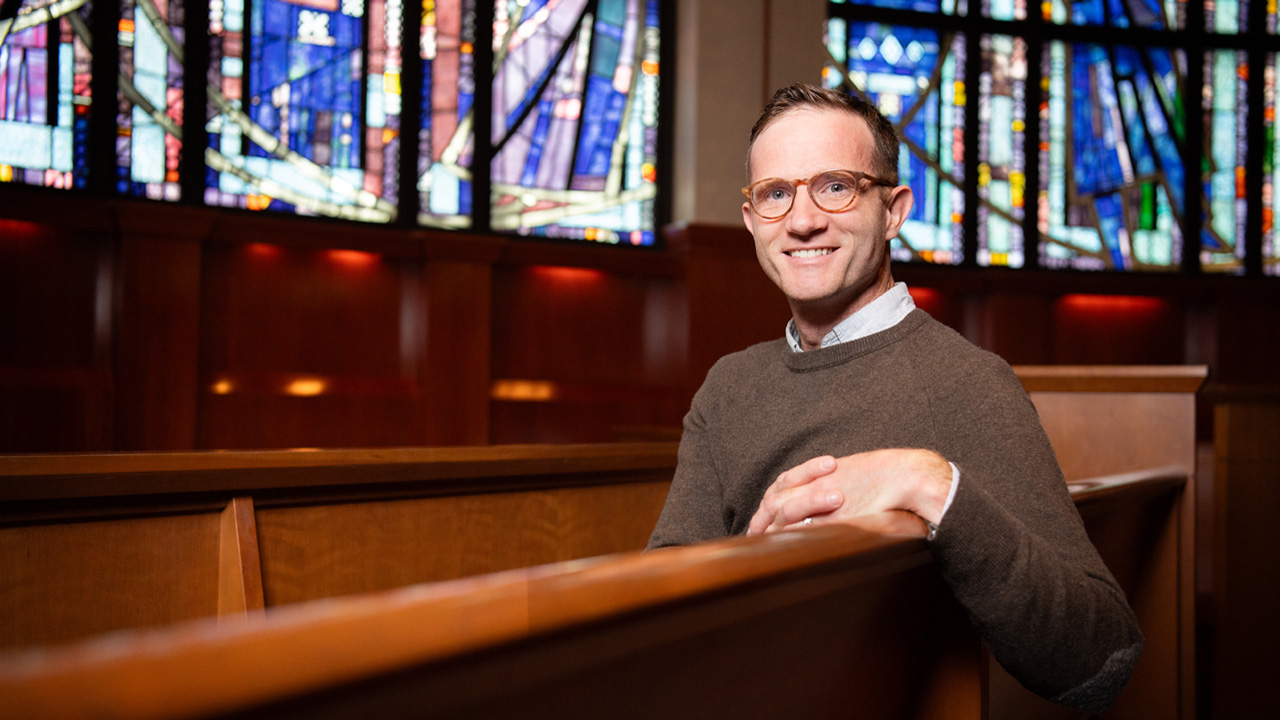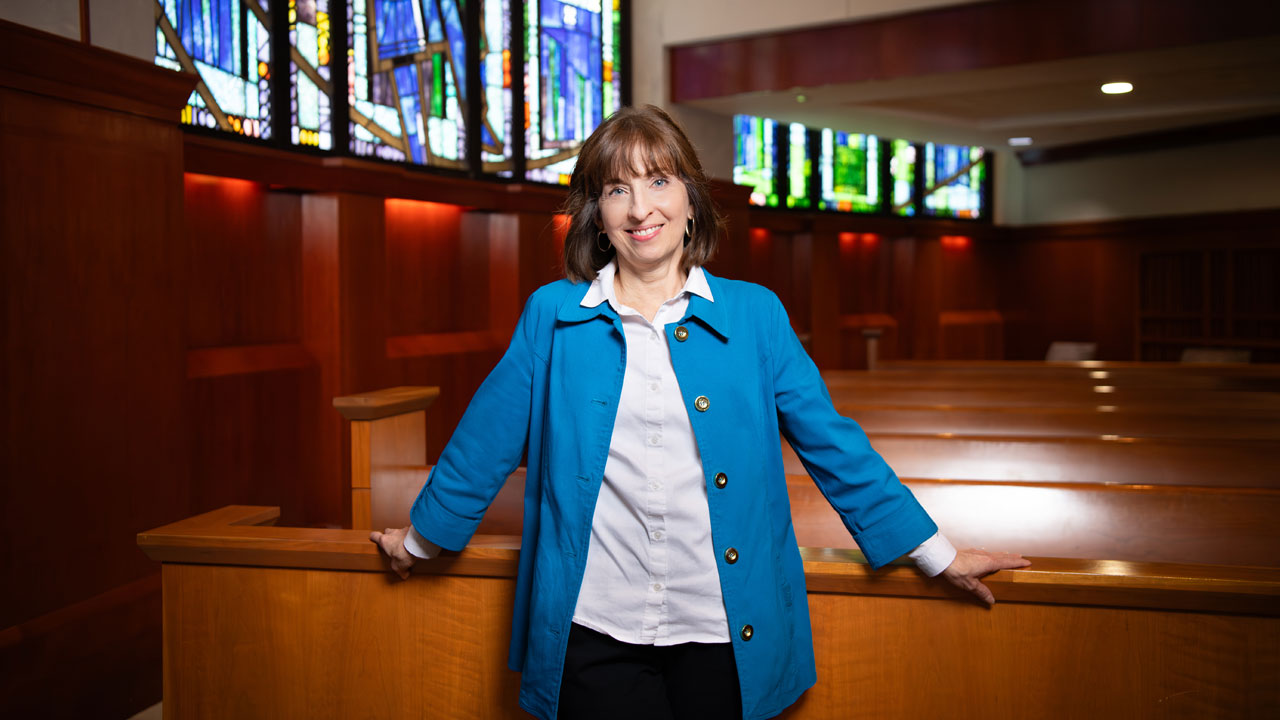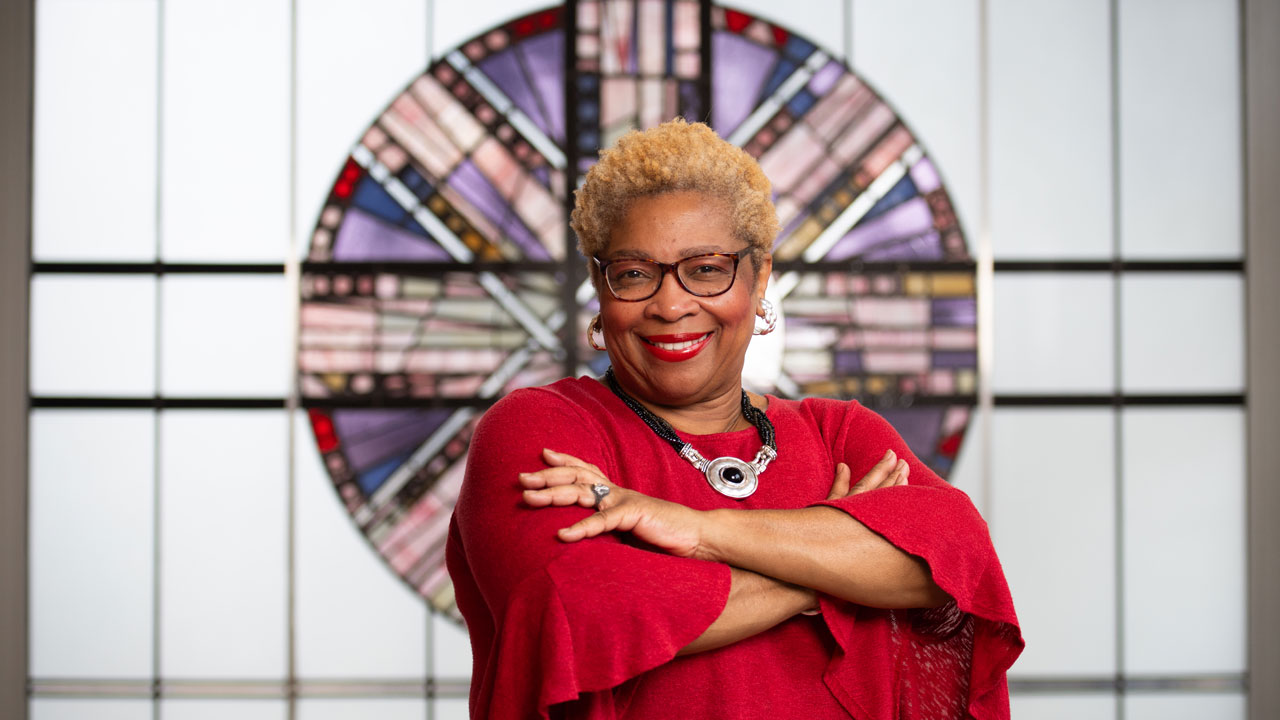Some change was inevitable for the 126-year-old Ascension St. Vincent’s Health System when the University of Alabama at Birmingham Health System Authority assumed ownership late in 2024. From the obvious (the sign on the North Tower now features the UAB logo) to the subtle (the hospital tote bags are now green).
But for Spiritual Care Manager Rev. Drew Phillips and his group of chaplains, one thing remains steadfastly the same. They are available to provide emotional support for anyone at St. Vincent’s, be it patients and their families, or the doctors, nurses and staff.

“Making the change from a Catholic health ministry to a [public] hospital was, in a lot of ways, a huge change. But our reasons for being here are still the same,” Phillips says. “We continue to provide compassion and give people the dignity they deserve. And the spirit and heart that is in that work hasn’t changed.”
And the change in ownership brought Phillips and some of this staff full circle to where they did their initial training.
A unique calling
Phillips first felt drawn toward this type of service at a young age. His grandmother passed away when Phillips was nine years old, and he found himself spending time supporting his grandfather as he dealt with the grief of losing his longtime companion.
“I knew he was sad, and I wanted to help him feel better,” Phillips recalls. “After that, I started having a draw toward helping people who are in difficult situations.”
This calling only intensified during his time at Samford University’s Beeson Divinity School. Phillips says by the time he graduated in 2012, “it had become clear that I wasn’t a preacher.” Chaplaincy, however, was emerging as an intriguing possibility.
“I felt more of a fire lit inside me when I was taking counseling classes and things like that,” Phillips says. “I had never really considered chaplaincy before. But once I got into it, I could tell that this was what I was meant to do.”
So Phillips enrolled in the Clinical Pastoral Education (CPE) program at UAB under former director Malcolm Marler. Phillips did a five-month internship followed by a one-year residency, spending much of his time working in UAB’s Level 1 Trauma Center.
“I don’t think people realize the level of training that hospital chaplains have to go through,” Phillips says. “There is a broad scope of clinical experiences and just a ton of learning. And on top of that, you’re going through this whole process of learning about yourself and identifying your own emotions and reactions to things.”
Learn more about the UAB CPE program in our previous story, Healing the Spirit.
In 2017, Phillips joined the chaplain staff at St. Vincent’s, then transitioned into his current role as Spiritual Care manager in 2021. Along the way, Phillips says he has discovered several important differences between hospital chaplaincy and traditional church ministry.
“The length of time we’re with folks is usually just a few days, so there is less of window to establish rapport and trust and build a relationship,” Phillips says. “Also, you’re serving a very diverse community. At church, most people have similar backgrounds and experiences and the same set of beliefs. But at a hospital, you never know who the person is in the bed until you start that relationship with them and learn about them.
“After that, it’s discerning what is the best way to support and help. Because it’s not going to be the same things that I might want. You can’t say, ‘If it were me, here’s what I would do.’ That might not mean very much to this person from a totally different background with a different set of beliefs. So how do I find those ways to connect and support? It takes me being willing to sit and listen and understand. It’s a challenge, but it’s something that I love about doing this work.”
A rewarding path
There are three full-time and two part-time chaplains working at the main St. Vincent’s hospital, just down University Boulevard from the UAB campus. In addition, there are four full-time chaplains at the St. Vincent’s East location in the Roebuck/Huffman area, another full-timer at the St. Clair County hospital, part-timers in Blount County and Chilton County, and an as-needed chaplain who rotates among the facilities.
While they all have different reasons for entering medical chaplaincy, many were motivated by the responses they received while dealing with their personal experiences of grief. For example, Rev. Thomas George—who has been at St. Vincent’s for three years—says it was the sudden passing of his older brother that initially led him down this path.
“I was moved by the way people cared for me and sat with me through my own pain,” George says. “They weren’t afraid of my tears. They just entered that space with me. I realized how much that meant to me, and that this was powerful work, being able to enter that space with people and care for them and help them grieve well.”

Like Phillips, George graduated from Beeson Divinity School (in 2020), then did CPE training and a residency at UAB under former Spiritual Health director Rev. Vic Dippenaar.
“Vic was not easy on me, which I’m grateful for,” George says. “That training was a very transformational experience. You learn to deal with your own stuff, so you can then deal with other people’s stuff.”
That is, in essence, the primary objective of spiritual care. Every situation is distinct, as are the people involved and their reactions to the situation. It is the chaplain’s task to find the best way to help people deal with a wide range of emotions.
“My goal is to try to read the person in order to locate where they are emotionally and spiritually, and that can be extremely different from one person to the next.” says Rev. Dollie Howell Pankey, who has been doing this work for nearly 20 years, the past two at St. Vincent’s. “Part of my job is just listening to them and learning to ask good questions, so I can listen some more.”
One of the biggest challenges for medical chaplains is the ability to handle all the intense emotions that can come with their work. Unlike church ministry, which usually includes such joyous moments as weddings and baptisms/christenings, medical chaplains often are surrounded by sadness.

“I mainly cover the ICU, and there are times after a very difficult death where I feel physically drained from the emotional energy toll that it took,” says Rev. Ann Carol Mann, who has been at St. Vincent’s since 2011. “At times you have to try to switch on and switch off daily, which can be a lot to handle.
“Still, it is an honor to be with patients and families at these times. I am honored to help people have courage at the end of life. I find it very rewarding to walk that path with people.”
Providing for the providers
Chaplains also are available to assist hospital staff, since the constant pressures of providing complex medical care can take an emotional toll on them as well. This relationship can be even more personal than what is found in a church ministry, because medical chaplains see and work with staff members on a near-daily basis instead of just on Sundays.
“Something I didn’t expect until I got here is the care that I get to provide the hospital team,” George says. “Patients come and go, but the staff is here every day. One of the biggest gifts to me is when they trust me with their pain and what they’re going through. How a patient encounter affected them. Those are some powerful moments. It’s sacred space anytime someone chooses to share that with me.”

Pankey agrees, saying she makes it a regular part of her work to check on how the doctors, nurses and staff are doing each day.
“Because if they’re not doing well, it makes it more difficult for them to provide good care for patients,” Pankey says. “They’ve told me that it helps them feel heard and loved, and lets them release their emotions when needed. I believe my presence helps make the units I cover more cohesive, which enhances their ability to provide care for the overall hospital.”
That is the ethos behind Spiritual Care that Phillips says will continue.
“Our focus is on the whole person and who they are. That supersedes anything else,” Phillips says. “We try to keep humanity at the forefront. Sadness and grief are certainly there at times. But even in sad circumstances, you can experience the love that is shown by someone. The chaplain is there to speak to all those needs of everybody involved.”